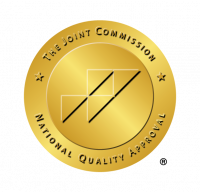
What Is Alcohol Use Disorder?
Alcohol Use Disorder (AUD) is a chronic, treatable illness, characterized by uncontrolled drinking and negative consequences from alcohol. It includes what is traditionally called alcoholism.
Ready for a change in your relationship with alcohol?
Definition of Alcohol Use Disorder
The National Institute on Alcohol Abuse and Alcoholism (NIAAA) defines AUD as:1
“… a medical condition characterized by an impaired ability to stop or control alcohol use despite adverse social, occupational, or health consequences.”
This ranges from what some people call “problem drinking,” to what is commonly known as alcohol dependence, or alcoholism.
Is AUD the Same Thing as Alcohol Addiction?
A person who is addicted to alcohol certainly qualifies as having alcohol use disorder. However, the term AUD is a bit more flexible, and describes a wide range of problems.
According to the American Society of Addiction Medicine (ASAM), the definition of addiction is:2
“… a treatable, chronic medical disease involving complex interactions among brain circuits, genetics, the environment, and an individual’s life experiences. People with addiction use substances or engage in behaviors that become compulsive and often continue despite harmful consequences.”
This describes many people with AUD, but may not cover every type of problem drinking.
Table of Contents
How Is Alcohol Use Disorder Diagnosed?
The Diagnostic and Statistical Manual of Mental Disorders (DSM-5) diagnoses AUD based on a list of 11 symptoms.3 Experiencing two or three of these issues in one 12-month period is enough for a diagnosis of mild alcohol use disorder. Four to five symptoms means moderate AUD, and having six or more qualifies as severe alcohol use disorder.
These 11 qualifications include:
- Alcohol getting in the way of important responsibilities
- Getting into dangerous situations because of alcohol use
- Increased tolerance (feeling the need to drink more to experience the same effects)
- Having withdrawal symptoms and cravings
AUD looks different from individual to individual. For one person, AUD might mean binge drinking too often and getting into dangerous situations. For another, alcohol use disorder might mean drinking heavily all day and having issues with their family and job. This is why different people will need different types of treatment to overcome AUD.
Concerned you may be drinking too much?
Take our free alcohol use survey to find out where you stand.
AUD Statistics (How Common Is AUD?)
AUD is more common than you might expect. 14.5 million people in the United States had an alcohol use disorder in 2019. Only 7.6 percent (1.1 million people) received treatment.4
Other important AUD statistics include:
- An estimated 9 million men and 5.5 million women in the U.S. have AUD.
- Men consume four of every five binge drinks.5
- Alcohol abuse and dependence among women increased by 83.7 percent from 2002 to 2013.6
- From the wars in Iraq and Afghanistan, about 1 in 10 returning veterans seen in the VA have a problem with alcohol or other drugs.7
- About 10.5 percent of children in the U.S. live with a parent with AUD.8
- Every year in the U.S., 95,000 people die from alcohol-related causes.
- A 2001 study showed that alcohol was responsible for about 2.3 million years of potential life lost in the U.S.9
Read more: Alcohol Use Disorder—The Statistics
How AUD Happens
There’s no single cause or trigger for AUD that holds true for all people. But there are several risk factors, such as:
- Frequent heavy alcohol use or binge drinking, especially at a younger age
- Genetics and family history of alcoholism
- Social influences, including peer pressure or social norms around drinking
- Mental health conditions like depression, PTSD, and ADHD
Some people develop problems with alcohol due to self-medication—attempting to manage chronic pain, stress, childhood trauma, or difficult emotions via substance use. Others can develop AUD as their body chemistry adjusts to frequent social drinking (including binge drinking), developing alcohol cravings or mental health symptoms after the fact. In many cases, it is some combination of these factors.
Whatever the root cause of a person’s drinking, alcohol misuse causes lasting changes to the brain. These changes lead to more severe AUD and make it harder to avoid alcohol long-term.
Read more: How Does Alcohol Use Disorder Happen?

Why Is Alcohol So Hard to Quit?
Quitting alcohol can be incredibly difficult, and much more complicated than “just stop drinking.” One reason is the changes to brain chemistry caused by long-term heavy alcohol use.
Alcohol:
- Activates the brain’s “reward circuit,” compelling you to drink again and to drink more over time
- Makes the brain’s “stress circuit” more sensitive, so people experience unpleasant feelings when they try to stop
- Impairs impulse control, decision-making, and critical thinking skills, so it’s harder to choose not to drink.
When people try to stop drinking without addressing these brain changes, cravings can get even worse over time.
There are also reasons why it can be hard for people to seek support to quit drinking. Some are in denial, while some fear society’s stigma around addiction. Others worry about the cost of treatment, or the need to take time away from work or family to attend traditional rehab.

Is There a Cure for AUD?
We know that AUD is manageable, but is there a cure? For a long time, experts believed AUD was not curable. Traditional 12-step programs, for example, are meant to help people manage the condition throughout their lives so they won’t relapse.
But recent research suggests that curing AUD may be possible. Today, there are medications that can treat AUD. These help correct the chemical imbalance that motivates people to drink, and reduce cravings. In combination with methods like recovery coaching, these medications achieve great results.
The idea that alcohol use disorder can be cured remains controversial, but treatment for AUD is more effective than ever.
Read more: Is There a Cure For Alcoholism?
How To Stop Drinking
There are many evidence-based solutions for alcohol addiction, and they often work best when combined together. Options include medication, support groups, recovery coaching and counseling, and progress-tracking tools. In some cases, people will also need medical supervision for detox, or more intensive care. It’s important to do your research so that you can find the approach that works best for you.
Learn more about How To Stop Drinking Alcohol
Preventing AUD
It’s possible to avoid or prevent AUD before you reach the point where it’s extremely difficult to stop:
• Reduce stress
• Find mental health support
• Create a healthy balance in your life
• Recognize and avoid triggers
• Get help early
If you can minimize some of the risk factors for AUD and get support early on, you have a much better chance of a full and lasting recovery.

Do I Have AUD?
The answer to the question, “What is AUD?” isn’t simple, and it’s not always obvious when someone has AUD. So, how do you know if you have alcohol use disorder? Common signs include:
- Drinking more, or longer, than you planned
- Trying to stop drinking or cut back, but not being able to do so
- Craving alcohol
- Continuing to drink, even though it has caused problems with family and friends
- Experiencing withdrawal symptoms when the effects of alcohol wear off
If you’re not sure, take our brief alcohol use survey to assess your drinking habits.
Ready to make a change?
Get started with Ria Health’s online program today.
References[+]
| 1↥ | https://www.niaaa.nih.gov/publications/brochures-and-fact-sheets/understanding-alcohol-use-disorder |
|---|---|
| 2↥ | https://www.asam.org/quality-care/definition-of-addiction |
| 3↥ | https://www.niaaa.nih.gov/publications/brochures-and-fact-sheets/alcohol-use-disorder-comparison-between-dsm |
| 4↥, 8↥ | https://www.niaaa.nih.gov/publications/brochures-and-fact-sheets/alcohol-facts-and-statistics |
| 5↥ | https://www.cdc.gov/alcohol/fact-sheets/binge-drinking.htm |
| 6↥ | https://www.cdc.gov/alcohol/features/excessive-drinking.html |
| 7↥ | https://www.ptsd.va.gov/understand/related/substance_abuse_vet.asp |
| 9↥ | https://www.cdc.gov/mmwr/preview/mmwrhtml/mm5337a2.htm |

